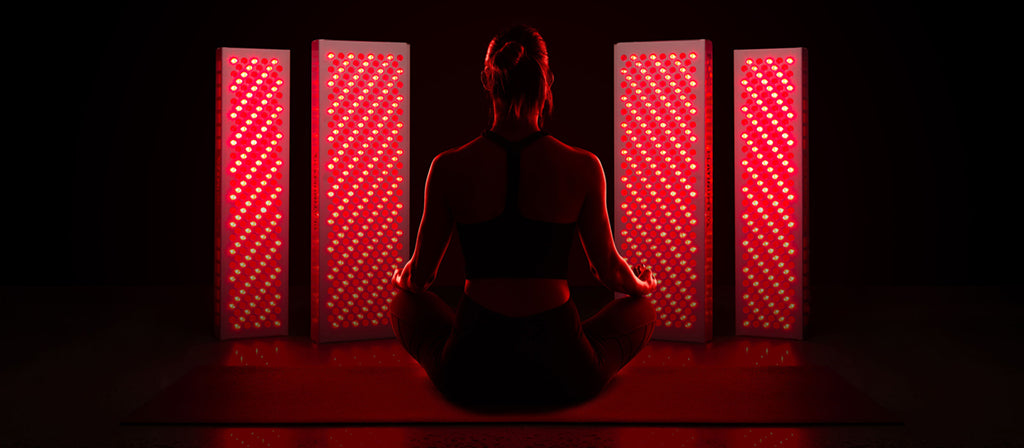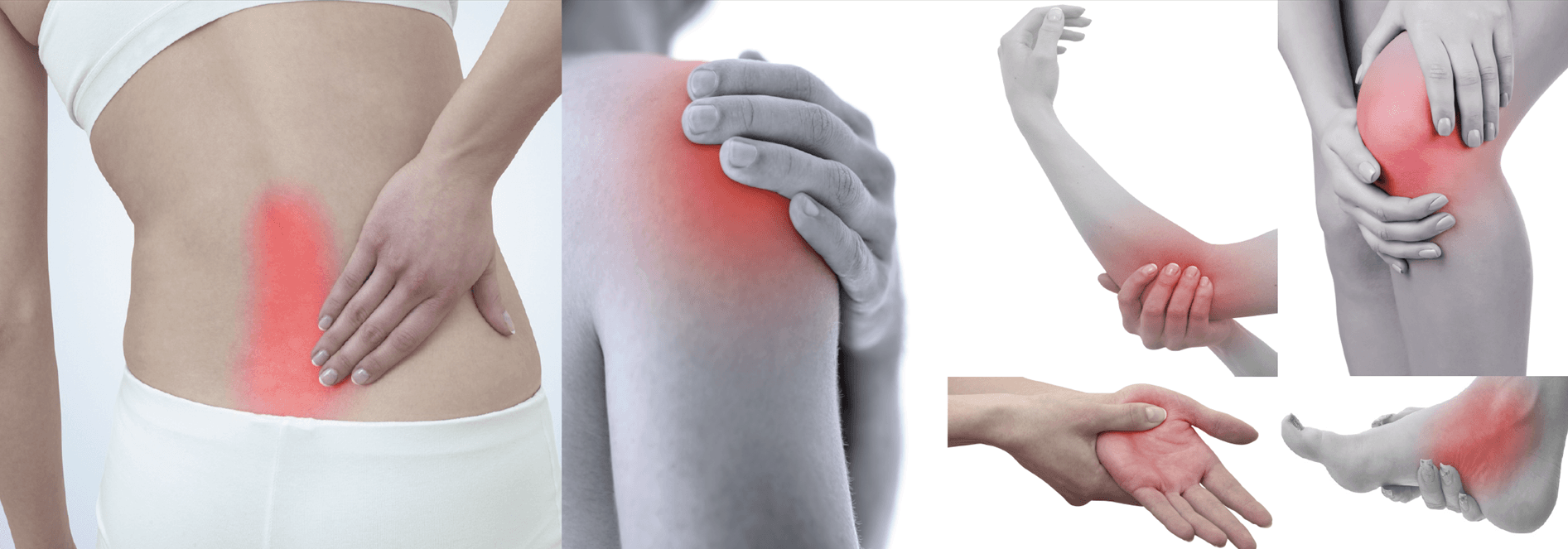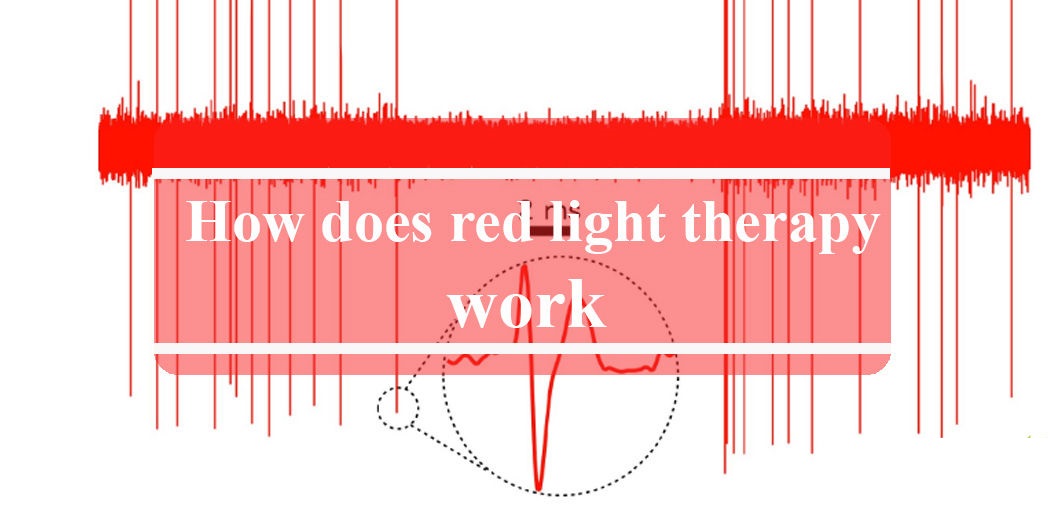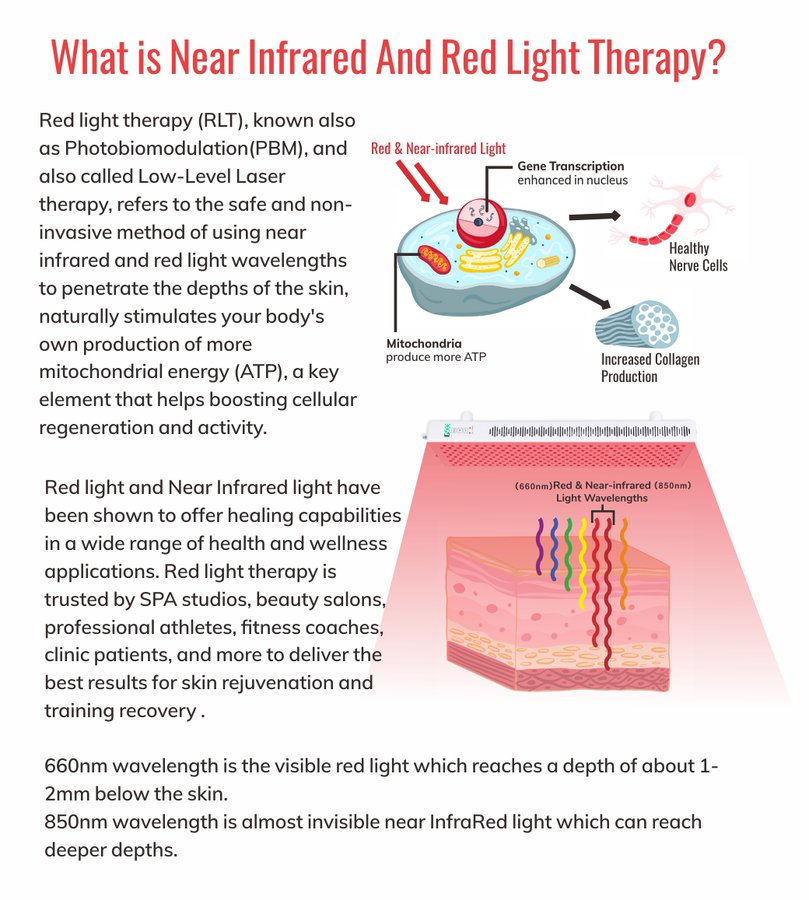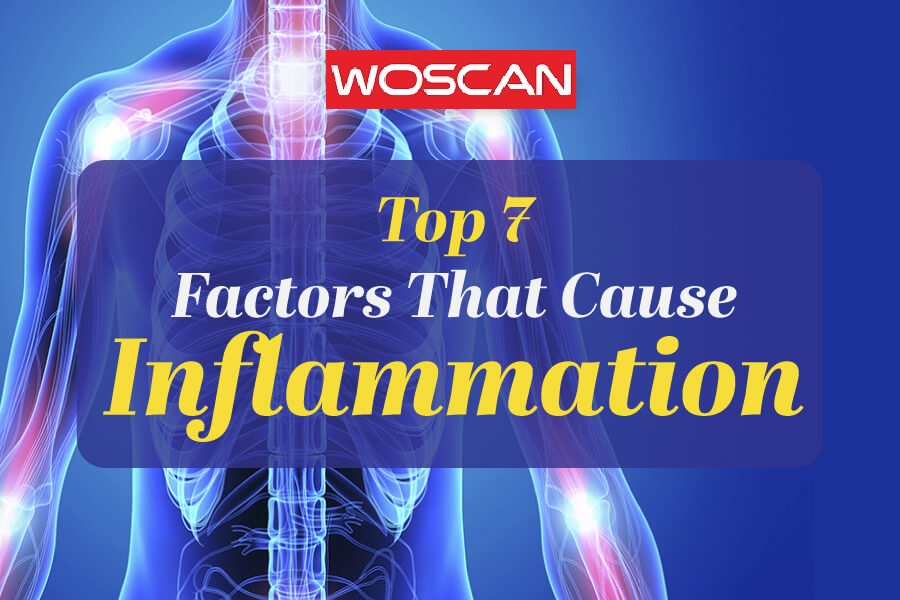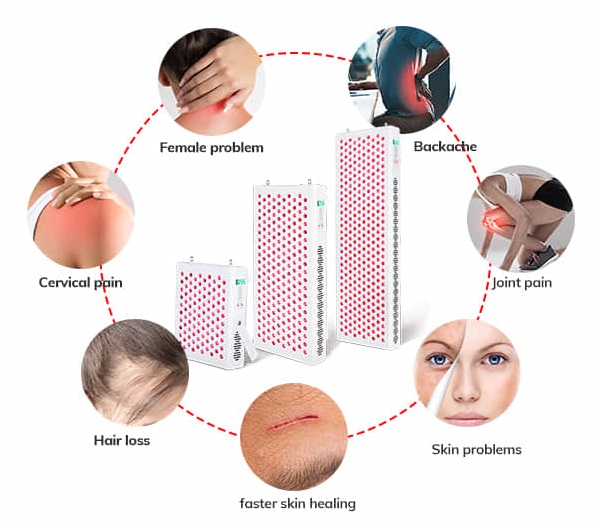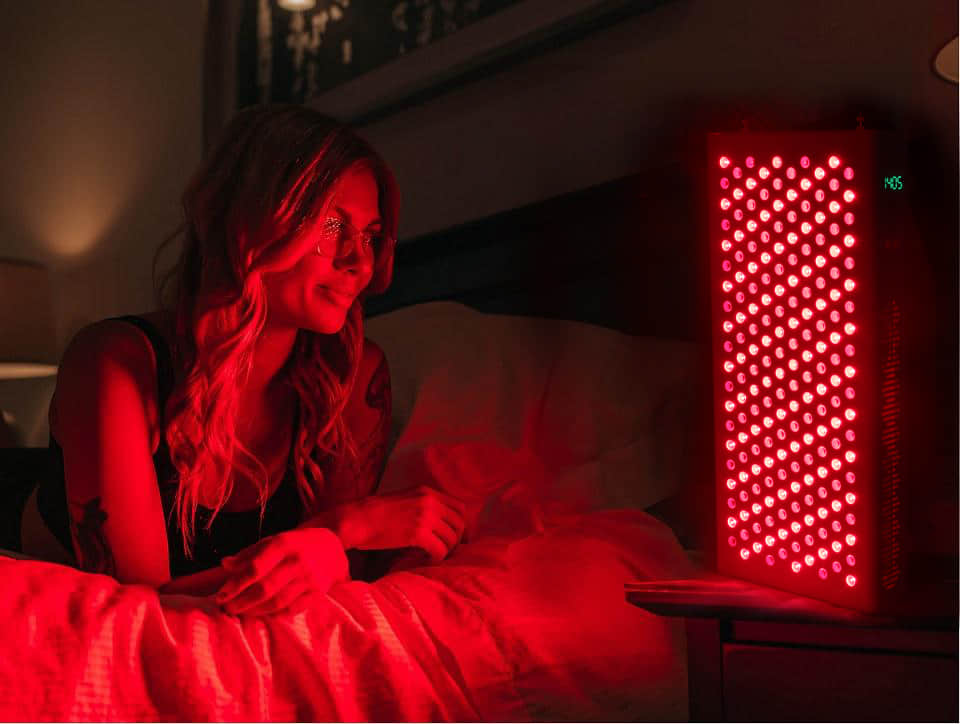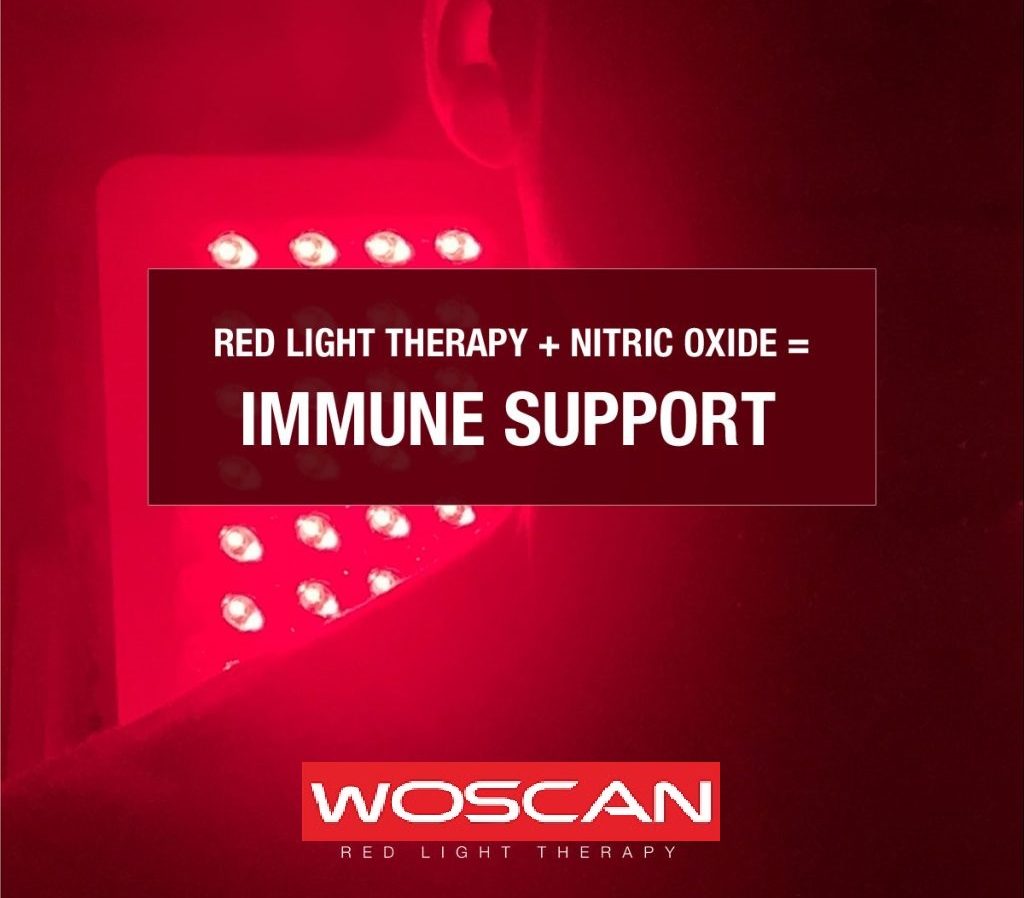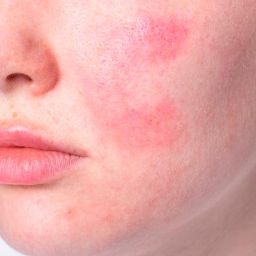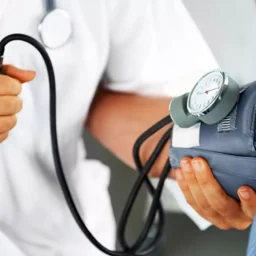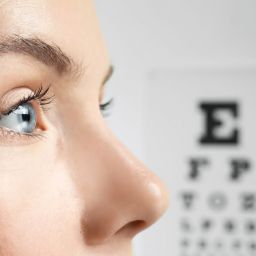
In today’s age of technology and medical advancements, one therapy that has gained significant attention is Red Light Therapy (RLT). A non-invasive approach that employs red low-level wavelengths of light, RLT has its roots in both ancient practices and modern scientific research. With its primary mechanism grounded in photobiomodulation (PBM), this therapy enhances the body’s natural healing process at a cellular and molecular level.
By stimulating the mitochondria, RLT promotes the production of adenosine triphosphate (ATP), an essential molecule responsible for energy transfer within cells. Furthermore, this therapy not only holds promise for those seeking accelerated injury recovery but also offers a broader array of health benefits. As we delve into the intricacies of RLT, we’ll unravel its physiological mechanism of action, explore its history, and provide a comprehensive overview of its potential in the realm of injury healing.
What is Red Light Therapy?
Red Light Therapy (RLT) is a cutting-edge, non-invasive therapeutic modality that harnesses the power of red low-level wavelengths of light to foster healing and improve physiological functions. At the heart of its mechanism lies a process known as photobiomodulation (PBM).
In PBM, specific wavelengths of red and near-infrared light penetrate the skin’s layers, interacting with cells and their energy-producing components, the mitochondria. This interaction stimulates the mitochondria to enhance the production of adenosine triphosphate (ATP), a pivotal molecule integral to cellular energy and function.
With its basis in both biology and physics, RLT is not merely about exposing the body to light. It’s a finely tuned process that channels the scientifically proven therapeutic properties of specific light wavelengths to offer targeted cellular benefits, primarily centered on energy production and cellular rejuvenation. Through this sophisticated mechanism, RLT provides a foundation for the body’s natural healing processes to operate at an optimized level.
How Does RLT Work?
Understanding the inner workings of Red Light Therapy (RLT) requires delving deep into cellular processes and physiological responses. The magic of RLT predominantly centers around its interaction with our body at multiple levels:
CELLULAR LEVEL:
The core of RLT’s efficacy is its ability to stimulate the mitochondria, often referred to as the cellular powerhouses. When exposed to the specific wavelengths of red and near-infrared light used in RLT, the mitochondria respond by enhancing the production of adenosine triphosphate (ATP). ATP is an essential molecule that acts as the primary energy currency of the cell, facilitating numerous vital functions.
This stimulation is achieved through the activation of the cytochrome c oxidase enzyme, a critical component in the electron transport chain within mitochondria. The activation accelerates ATP synthesis, ultimately leading to heightened cellular energy and vitality.
TISSUE LEVEL:
One of the remarkable benefits of RLT is its ability to promote collagen production. Collagen is a primary protein in connective tissues and plays an indispensable role in wound healing and maintaining skin elasticity.
Another consequential effect of RLT is the enhancement of circulation. When tissues are exposed to the therapeutic wavelengths, there is a vasodilation effect, leading to increased blood flow. This improved circulation means that oxygen and nutrients can be more efficiently delivered to the injury sites, further expediting the healing process.
Furthermore, RLT plays a significant role in modulating the body’s inflammatory response. Inflammation, while a natural and initial response to injury, can be detrimental if prolonged. RLT aids in reducing the release of pro-inflammatory cytokines, while simultaneously promoting the release of anti-inflammatory cytokines. This balanced approach ensures that inflammation is controlled, allowing the affected area to heal effectively without excessive swelling or pain.
In essence, RLT operates by harnessing the natural biological responses of the body, amplifying them through scientifically targeted wavelengths of light, and promoting an environment conducive to optimal healing and cellular function.
The Science Behind RLT and Injury Healing
The multifaceted benefits of Red Light Therapy (RLT) for injury healing can be credited to its scientifically backed mechanisms which influence cellular function, circulation, and inflammation. To elucidate these benefits, it’s essential to delve into the findings of prominent research studies in the field of photobiomodulation:
NEURONAL FUNCTION AND SURVIVAL:
The potency of RLT in enhancing brain health is evident in a study titled “The effect of photobiomodulation on the brain during wakefulness and sleep.” The research asserts, “These studies have shown that photobiomodulation improves neuronal function and survival in the brain after stimulating mitochondrial activity in neurones, as well as activating a range of stimulatory and protective pathways.”[1] This highlights that, besides promoting general injury healing, RLT has promising implications for neural health, which is vital considering the brain’s significance in overall body function.
ANTI-INFLAMMATORY EFFECTS:
One of the hallmarks of RLT is its role in mitigating inflammation, a critical component of the injury healing process. As elucidated in the study titled “Mechanisms and applications of the anti-inflammatory effects of photobiomodulation,” the findings emphasize that “The local reduction of edema, and reductions in markers of oxidative stress and pro-inflammatory cytokines are well established.”[2] This evidence points towards the therapy’s effectiveness in reducing inflammation at the injury site, ensuring that the natural healing process isn’t hindered by excessive inflammatory responses.
ENHANCED CIRCULATION:
RLT’s influence on circulation and its contribution to injury healing cannot be overlooked. A study named “Microcirculatory Response to Photobiomodulation-Why Some Respond and Others Do Not: A Randomized Controlled Study” provides invaluable insights. According to the study, “We demonstrated that PBM induces arteriolar vasodilatation that results in both immediate and long-lasting increased capillary flow and tissue perfusion in healthy individuals.” [3] This is a testament to RLT’s capability to improve blood flow, ensuring that injured areas receive the necessary oxygen and nutrients to expedite healing.
It becomes evident that RLT offers a multi-pronged approach to injury healing. By targeting neuronal function, modulating inflammation, and bolstering circulation, RLT stands as a promising therapeutic avenue rooted deeply in scientific evidence.
Benefits of Using RLT for Injury Healing
Red Light Therapy (RLT) is a testament to the confluence of nature’s simplicity and scientific innovation. As its popularity grows in the medical and wellness community, understanding its benefits, especially concerning injury healing, becomes imperative. Here’s a comprehensive look at the advantages:
FASTER RECOVERY TIMES:
At its core, RLT facilitates the enhancement of mitochondrial activity, leading to increased production of adenosine triphosphate (ATP). With elevated ATP levels, cellular repair and regeneration processes are accelerated, translating to quicker recovery from injuries.
REDUCED PAIN AND DISCOMFORT:
By modulating the release of pro-inflammatory and anti-inflammatory cytokines, RLT helps in managing and reducing pain. The therapy’s ability to control inflammation ensures that the healing process is not only expedited but also less painful, minimizing the discomfort often associated with injuries.
MINIMIZED SCAR FORMATION:
Collagen, a primary structural protein in our skin and connective tissues, is produced in greater quantities under the influence of RLT. This increase in collagen synthesis means wounds can heal with reduced scar tissue, leading to better cosmetic outcomes and improved tissue functionality.
DECREASED NEED FOR MEDICATIONS OR OTHER THERAPIES:
Given its natural and non-invasive approach, RLT can reduce the reliance on pain medications and other interventions. As it addresses the root causes of delayed healing, like reduced cellular energy and prolonged inflammation, there’s often a diminished need for supplementary therapies.
The benefits of RLT for injury healing are rooted in its ability to harness the body’s intrinsic healing mechanisms, amplified by the therapeutic properties of specific light wavelengths. By targeting cellular functions and systemic responses, RLT emerges as a potent tool in the arsenal of holistic and effective injury management.
Types of Injuries Benefited by RLT
Red Light Therapy (RLT) is not a one-size-fits-all solution, but its broad spectrum of benefits, grounded in its scientifically-backed mechanisms, makes it applicable for various injuries. The ability of RLT to stimulate cellular processes, enhance collagen synthesis, and modulate inflammatory responses lends itself to aiding in the healing of a diverse range of injuries:
- Muscle Strains and Sprains: Muscle tissues, when injured, undergo inflammation, cellular damage, and oxidative stress. RLT, through its action on mitochondrial ATP production, fosters quicker cellular regeneration. By optimizing the local environment of the injured site, it aids in the faster repair of muscle fibers and surrounding tissues.
- Tendonitis: Tendons, the fibrous connective tissues that join muscles to bones, can become inflamed due to overuse or strain. Known as tendonitis, this condition can benefit from RLT’s anti-inflammatory effects. The therapy also stimulates collagen synthesis, crucial for the structural integrity of tendons, promoting more efficient tendon repair.
- Bone Fractures: The potential of RLT in aiding bone healing is anchored in its ability to enhance cellular metabolism and circulation. Improved blood flow ensures that the fracture site receives essential nutrients and oxygen, optimizing the bone remodeling process. Moreover, RLT’s effect on collagen production plays a role in the formation of the bone matrix.
- Post-surgical Wounds: Surgical interventions often leave behind wounds that require efficient healing to minimize scar formation and complications. RLT’s action on collagen synthesis, as well as its anti-inflammatory properties, ensures that post-surgical wounds heal with fewer complications and better cosmetic outcomes.
- Burns and Skin Conditions: Burns, whether from thermal sources or chemicals, inflict damage that extends beyond the skin’s surface. RLT promotes faster skin regeneration by enhancing ATP production and collagen synthesis. Its anti-inflammatory properties also play a pivotal role in managing the pain and inflammation often associated with burns.
In essence, the diverse applicability of RLT stems from its foundational biological and physiological mechanisms. By addressing the core aspects of healing—cellular energy, inflammation control, and tissue regeneration—RLT offers therapeutic benefits for a comprehensive range of injuries.
Devices and Technology
The surge in interest surrounding Red Light Therapy (RLT) has led to significant advancements in the devices and technologies employed to harness its benefits. These devices, intricately designed and developed based on scientific principles, aim to maximize the therapeutic potential of RLT by optimizing the delivery of specific light wavelengths to the target tissues. Let’s explore the diverse range of RLT devices and the technology behind them:
HANDHELD DEVICES:
- Mechanism: These portable units, often powered by LEDs, emit specific wavelengths of red or near-infrared light. Their design is ideal for targeted therapy sessions, allowing users to focus on specific injury sites or areas of concern.
- Application: Perfect for personal use, treating localized injuries, and on-the-go therapy sessions.
PANEL SYSTEMS:
- Mechanism: Larger than handheld devices, these panels use multiple LEDs to deliver red and near-infrared light over broader areas. When properly designed and configured, they ensure an even distribution of light, covering larger regions of the body.
- Application: Suitable for greater exposure or when multiple injury sites need simultaneous attention. Often found in homes and in professional settings like clinics or wellness centers.
FULL BODY RED LIGHT BEDS:
- Mechanism: Lined with LEDs, they ensure full-body exposure to therapeutic light wavelengths.
- Application: Ideal for comprehensive therapy sessions with local and systemic benefits, addressing multiple injury sites or conditions in one session. It is the best option to take advantage of the large range of benefits of red light therapy.
FLEXIBLE STRIPS OR PADS:
- Mechanism: These devices incorporate LEDs into flexible materials, allowing the device to conform to the body’s contours. This ensures that the light is delivered effectively to uneven or curved surfaces.
- Application: Best for wrapping around joints, limbs, or other areas where a flat panel might not offer optimal coverage. The vast majority of flexible red light pads are very low intensity and require substantially longer treatment times.
Understanding the technology and devices behind RLT is essential for both professionals and individuals seeking its benefits. The key lies in choosing a device that aligns with the therapy’s intended purpose, ensuring optimal outcomes grounded in the scientific and biological principles of photobiomodulation.
As we reflect on the multifaceted potential of Red Light Therapy (RLT), it’s evident that its foundation lies deep within the interplay of biology, science, and technology. Through the application of specific wavelengths—630nm, 660nm, 810nm, 830nm, 850nm and 980nm—RLT effectively taps into the body’s intrinsic healing mechanisms. By stimulating mitochondrial function and promoting the synthesis of adenosine triphosphate (ATP), it accelerates the cellular processes vital for injury recovery.
The advancements in device technology ensure that the therapeutic properties of these wavelengths are harnessed optimally, providing tailored solutions for diverse injuries. Whether it’s the anti-inflammatory effects, the stimulation of collagen production, or the enhancement of blood circulation, RLT offers a holistic approach to injury healing.
In an era where medical solutions are continuously evolving, RLT stands out, not as a short term trend, but as a testament to the possibilities that emerge when nature’s simplicity is enhanced by scientific innovation. For those on the journey of injury recovery or those assisting others on this path, Red Light Therapy offers a promising, scientifically-backed avenue worth the investment.
[1] Moro C, Valverde A, Dole M, Hoh Kam J, Hamilton C, Liebert A, Bicknell B, Benabid AL, Magistretti P, Mitrofanis J. The effect of photobiomodulation on the brain during wakefulness and sleep. Front Neurosci. 2022 Jul 28;16:942536. doi: 10.3389/fnins.2022.942536. PMID: 35968381; PMCID: PMC9366035.
[2] Hamblin MR. Mechanisms and applications of the anti-inflammatory effects of photobiomodulation. AIMS Biophys. 2017;4(3):337-361. doi: 10.3934/biophy.2017.3.337. Epub 2017 May 19. PMID: 28748217; PMCID: PMC5523874.
[3] Gavish L, Hoffer O, Rabin N, Halak M, Shkilevich S, Shayovitz Y, Weizman G, Haim O, Gavish B, Gertz SD, Ovadia-Blechman Z. Microcirculatory Response to Photobiomodulation-Why Some Respond and Others Do Not: A Randomized Controlled Study. Lasers Surg Med. 2020 Nov;52(9):863-872. doi: 10.1002/lsm.23225. Epub 2020 Feb 17. PMID: 32064652.


